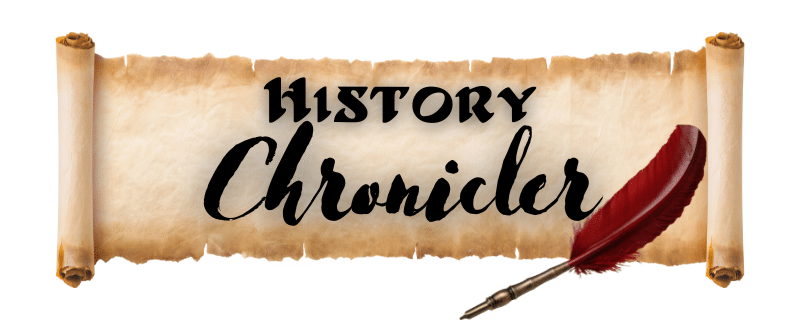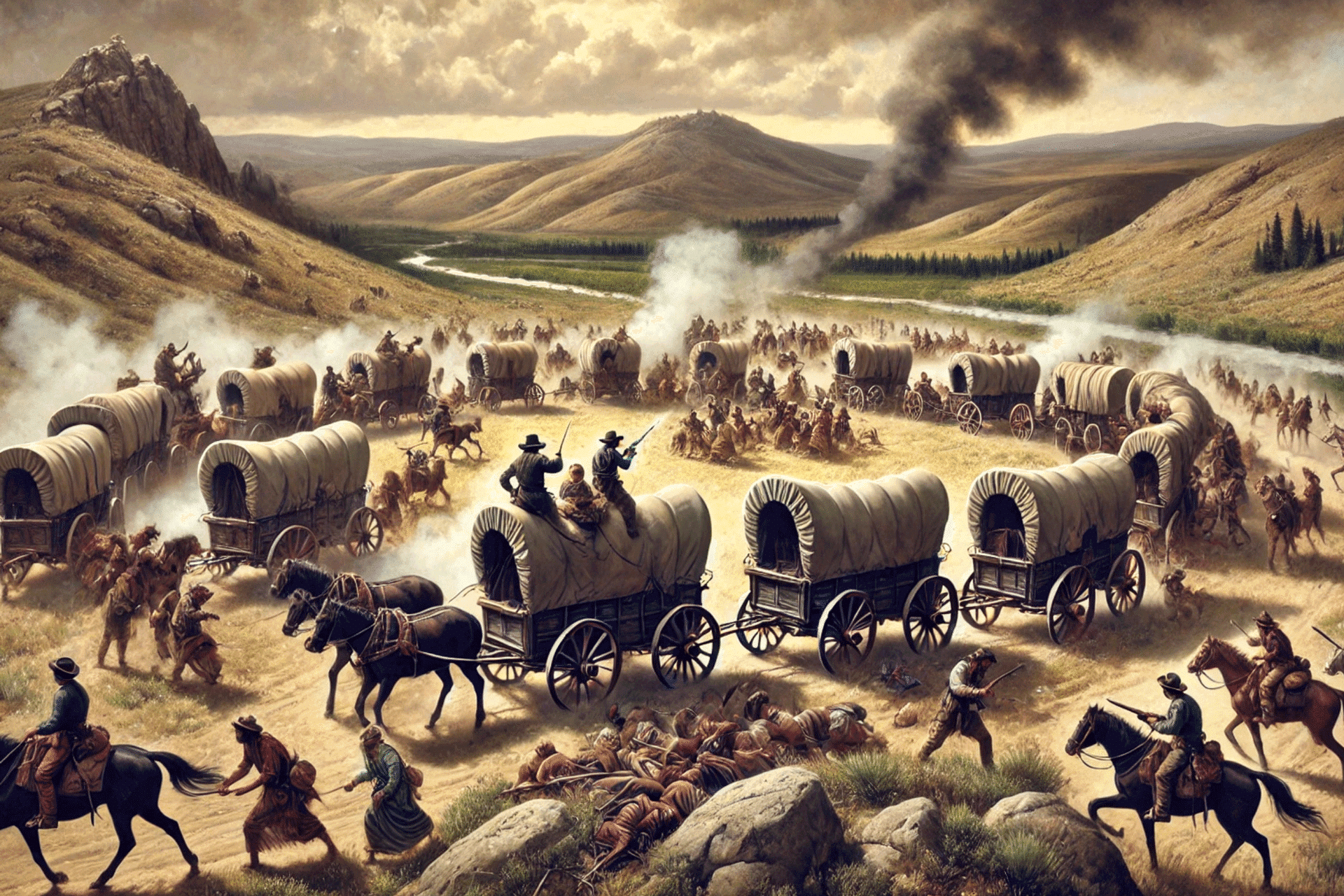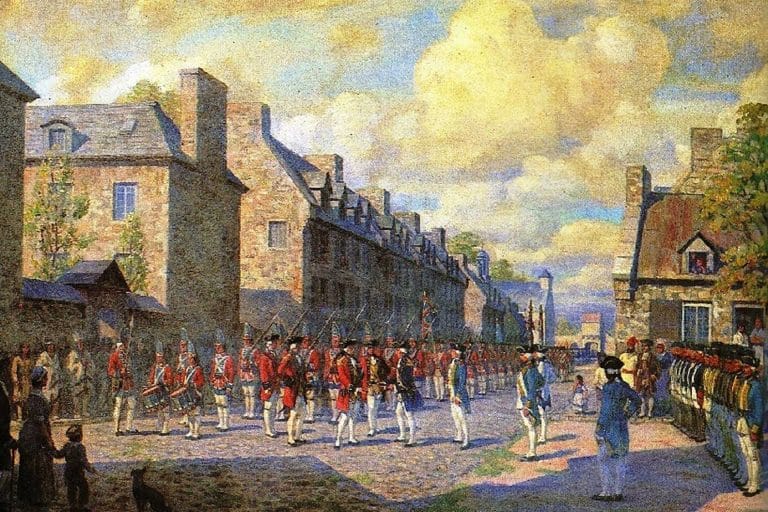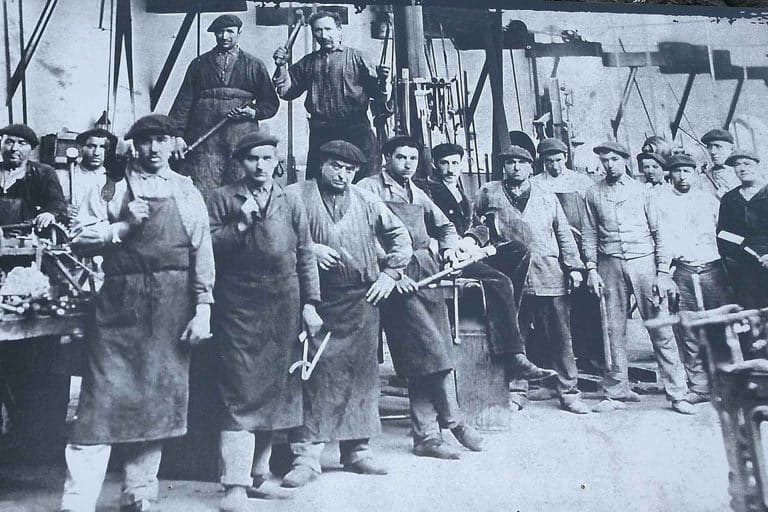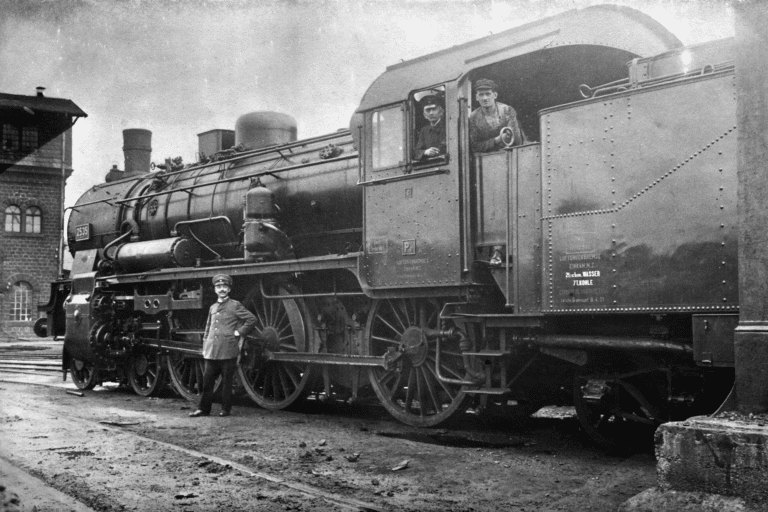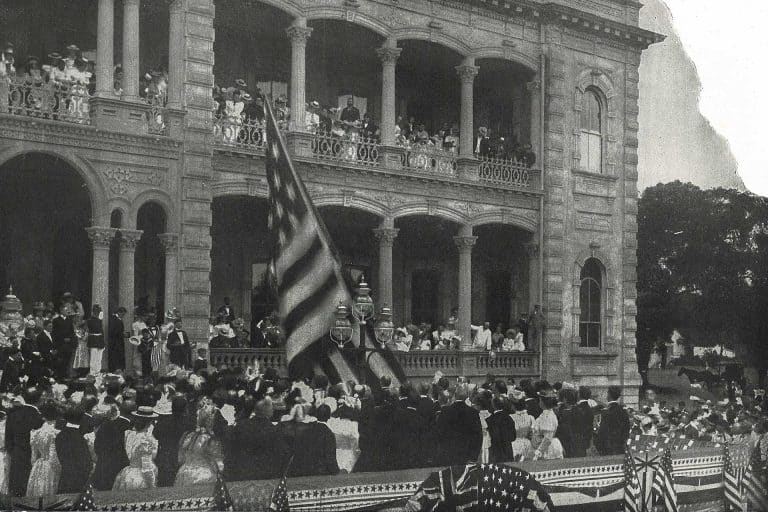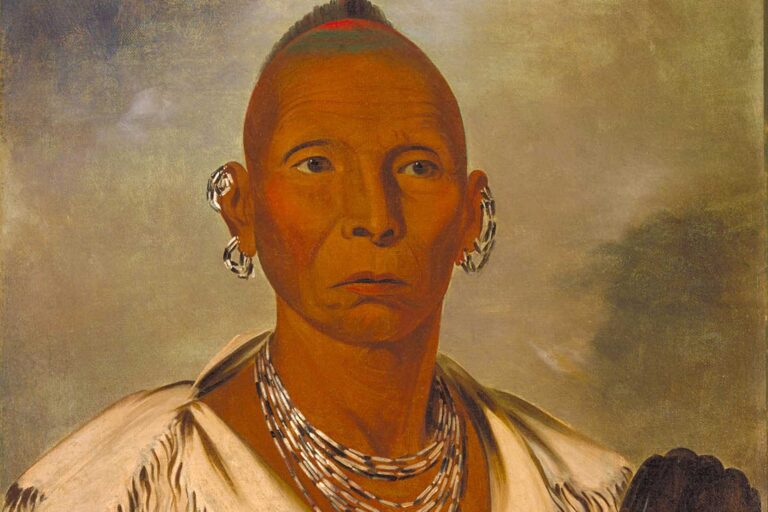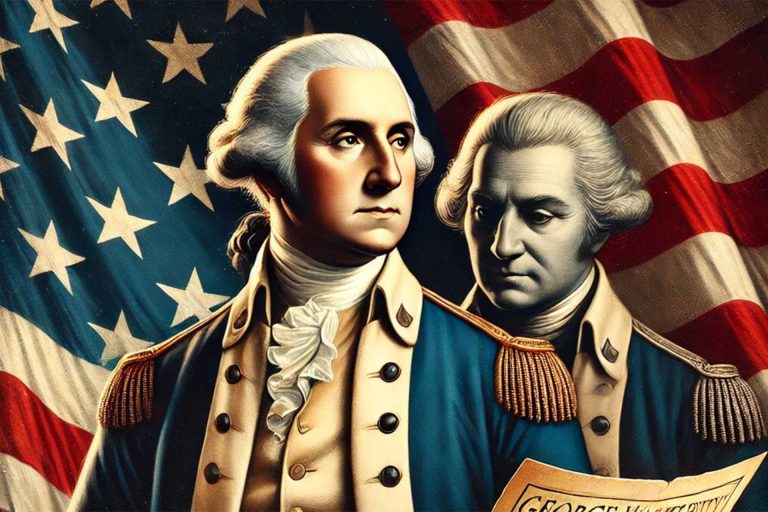The Fragile Frontier: Mormon Settlers and the Mountain Meadows Massacre
The Mountain Meadows Massacre remains one of the darkest and most controversial events in the history of the American West. Taking place in September 1857, this tragic incident involved a group of Mormon settlers and local Native Americans ambushing a wagon train of emigrants traveling from Arkansas to California. The massacre did not occur in isolation—it was the product of escalating tensions between Mormon settlers and the U.S. government during a period of intense territorial conflict and religious persecution. Understanding the events leading to the Mountain Meadows Massacre requires exploring the fragile existence of Mormon communities in Utah Territory and their struggle to maintain autonomy in an increasingly hostile frontier.
The Mormon Settlement of Utah Before Leading Up to the Mountain Meadows Massacre
The Mormon settlement of Utah began in 1847, when Brigham Young led thousands of members of The Church of Jesus Christ of Latter-day Saints (LDS) to the Salt Lake Valley. Fleeing religious persecution in the eastern United States, the Mormons sought a remote location where they could establish a theocratic society and practice their faith without interference. At the time, Utah was part of Mexico, but after the Mexican-American War ended in 1848, it became U.S. territory, placing the Mormons once again under American jurisdiction.
By the early 1850s, the Mormon community had expanded rapidly, creating settlements across the Utah Territory. They established a system of self-sufficiency with farming, irrigation, and communal living at its core. Brigham Young was appointed governor of the Utah Territory in 1850, further cementing Mormon leadership over the region. Despite their isolation, tensions with non-Mormon settlers and federal authorities grew, fueled by mistrust of Mormon practices such as polygamy and theocratic governance.
As Utah’s population increased, so did the settlers’ determination to maintain their autonomy. The federal government, wary of the perceived rebellion and separatism of the Mormons, attempted to assert greater control over the territory. This tension peaked in 1857 when President James Buchanan sent a military expedition, later known as the Utah War, to install a new non-Mormon governor and reassert federal authority. The looming presence of federal troops created an atmosphere of fear and hostility among Mormon leaders and settlers.
By mid-1857, the Mormon settlers had fortified their defenses and prepared for potential conflict. Brigham Young implemented a defensive strategy, calling for local militias to guard settlements and encouraging isolation from outsiders. This tense environment created a precarious situation for emigrant groups passing through Utah Territory.
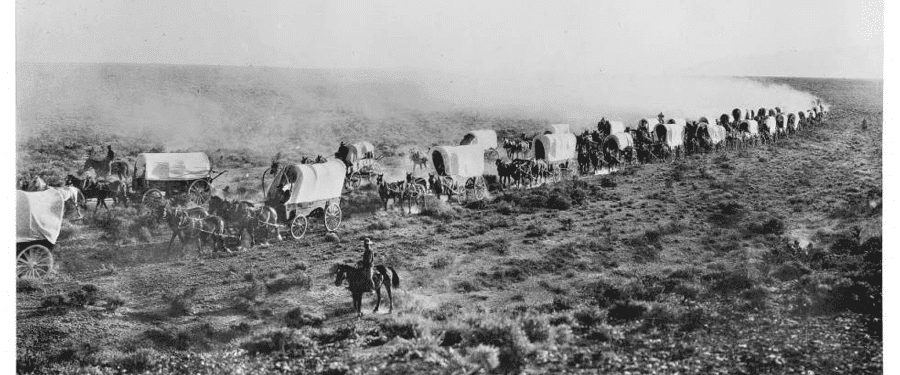
The Baker–Fancher Party Before Reaching Utah Territory
In early 1857, the Baker–Fancher party was formed from several groups of emigrants primarily from northwestern Arkansas, including Marion, Crawford, Carroll, and Johnson counties. These families assembled at Beller’s Stand, near present-day Harrison, Arkansas, to begin their journey westward toward southern California. Initially referred to as the Baker train or Perkins train, the group became known as the Baker–Fancher party, named after its leader, “Colonel” Alexander Fancher. Fancher, a seasoned frontiersman who had already made two successful trips to California, was trusted for his experience and knowledge of the perilous route.
By the standards of the time, the Baker–Fancher party was considered prosperous, well-organized, and adequately supplied for the long journey across the western frontier. They traveled in a carefully structured wagon train, which was essential for protection and efficiency. Their route was well-planned, and they intended to restock their provisions in Salt Lake City, a common practice for emigrants on the trail. Along the way, additional families and individuals from Missouri and other states joined the party, swelling their numbers and creating a diverse and sizable group of pioneers.
The party’s wealth and preparedness set them apart from many other emigrant groups. They were known to have a large number of cattle, horses, and other livestock, which made them a target for both admiration and envy. Their goal was to establish new lives in California, a destination that had grown increasingly popular due to the Gold Rush and expanding economic opportunities. The Baker–Fancher party’s journey through the wilderness was typical of westward migration during this era, yet their fate would be anything but ordinary.
As they approached Utah Territory, tensions between Mormon settlers and the U.S. government were already reaching a boiling point, creating a volatile environment. The Baker–Fancher party had little reason to suspect that their planned stop in Salt Lake City, intended to replenish their supplies, would place them in the midst of a tense and dangerous conflict that would ultimately lead to one of the West’s most infamous tragedies.
The Baker–Fancher Party’s Arrival in Utah
The Baker–Fancher party arrived in Utah Territory in August 1857, following months of travel across the western frontier. Their goal was to reach southern California, but like many emigrant groups, they planned to rest and resupply in Salt Lake City before continuing their journey. Upon entering Utah, the emigrants encountered a tense atmosphere. With federal troops en route to the territory and fears of conflict running high, Mormon settlers viewed outsiders with growing suspicion. This heightened tension would play a key role in the events leading to the Mountain Meadows Massacre.
They drew attention as they passed through various Mormon settlements. Historically, emigrant groups had been welcomed and traded with by local communities, but in 1857, the political climate made interactions more strained. Reports suggest that the Baker–Fancher party experienced difficulty obtaining supplies, as Mormon leaders had ordered communities to limit their interactions with outsiders. This decision, fueled by fears of espionage and sabotage, made resupplying difficult for the travelers, adding stress to their already arduous journey.
Despite these challenges, the party pressed on, continuing southward toward the Mountain Meadows, a fertile resting spot on the trail to California. Mormon militias, known as the Nauvoo Legion, had been mobilized to guard settlements and watch for any perceived threats. As the Baker–Fancher party moved through Utah, they unknowingly entered a region brimming with fear and hostility. Their presence was misinterpreted by some as part of a potential federal plot, further escalating tensions.
By early September, the emigrants had reached the Mountain Meadows, unaware of the danger that lay ahead. Caught in the midst of the growing conflict between Mormon settlers and the U.S. government, the party would soon become victims of one of the most infamous and tragic episodes in American frontier history: the Mountain Meadows Massacre.
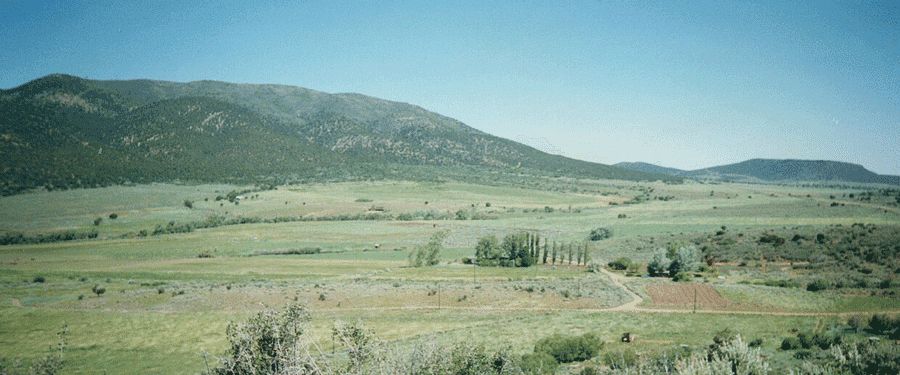
The First Attack and Encirclement of the Baker–Fancher Party
After leaving Corn Creek, the Baker–Fancher party traveled 125 miles toward Mountain Meadows, passing through the Mormon communities of Parowan and Cedar City. These towns were led by Stake Presidents William H. Dame and Isaac C. Haight, who were also senior military leaders of the Nauvoo Legion. As the emigrants approached, local LDS leaders convened several meetings to discuss how to handle the situation, given Brigham Young’s declaration of martial law. Although some leaders proposed using Native American allies to attack the emigrants, the council ultimately decided to wait for Young’s response before taking any action. Despite this resolution, Haight secretly sent a message south to John D. Lee, a key figure in the unfolding events.
By early September, the Baker–Fancher party reached Mountain Meadows, a well-known resting point along the Old Spanish Trail. Exhausted from their journey, they planned to spend several days recuperating before continuing toward California. However, on September 7, they were suddenly attacked by a group of Nauvoo Legion militiamen disguised as Native Americans, accompanied by actual Paiute warriors. The emigrants quickly encircled their wagons, chaining the wheels together to form a defensive barrier. Despite their efforts, seven members of the party were killed in the initial attack, and sixteen others were wounded. The survivors managed to hold off the attackers, but their supplies of water and ammunition quickly began to dwindle.
The siege dragged on for five days, leaving the emigrants in a desperate situation. With no access to fresh water or food, their chances of survival grew increasingly slim. Meanwhile, disarray spread among the Mormon militia leaders as fears mounted that some of the emigrants had recognized white men among their attackers. Concerned that word might spread about their involvement, the militia leaders faced a critical decision. Eventually, they resolved to eliminate all the emigrants, sparing only the youngest children who were believed too young to remember or testify about the event. This order would lead to the tragic culmination of what would become known as the Mountain Meadows Massacre.
Though the initial attack had been intended to intimidate or drive off the Baker–Fancher party, it quickly escalated into a prolonged and deadly siege. What began as a tense confrontation soon spiraled into one of the most infamous massacres in American frontier history, highlighting the fragile nature of life in the Utah Territory during this turbulent period of U.S. Territorial Expansion.
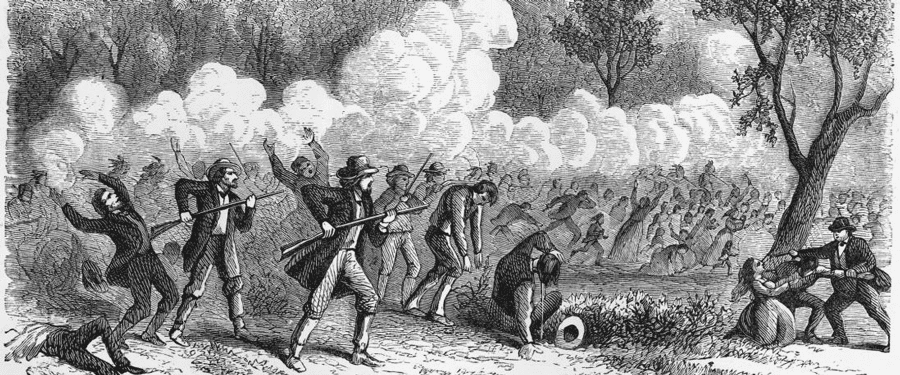
Treachery Following the Truce and the Massacre at Mountain Meadows
On September 11, 1857, after five days of siege, two militiamen approached the Baker–Fancher party under a white flag, accompanied by John D. Lee, a Mormon militia officer and Indian agent. Lee informed the weary emigrants that he had negotiated a truce with the Paiute warriors. He promised safe passage to Cedar City under Mormon protection, but only if the emigrants surrendered their livestock and supplies. Believing they had no other choice, the emigrants accepted the offer, unaware that this truce was a prelude to the infamous Mountain Meadows Massacre.
Under the guise of safety, the emigrants were led out of their fortifications. The men were separated from the women and children and paired with militiamen posing as escorts. At a prearranged signal, the militiamen turned and shot the male emigrants, while others ambushed the women and children from hiding places. Seventeen children, considered too young to understand or testify about the events, were spared. However, at least one older girl was executed in front of the younger children to prevent her from identifying the attackers. In the aftermath of the Mountain Meadows Massacre, the surviving children were taken in by local Mormon families.
Eventually, the U.S. Army reclaimed the surviving children present at the Mountain Meadows Massacre and returned them to their relatives in Arkansas. Accounts from the time describe the children as malnourished, filthy, and in poor health due to neglect while in the custody of their captors. Reports by Captain James Lynch in 1859 vividly described their “wretched condition,” noting that they were half-starved, poorly clothed, and infested with vermin. The harrowing experiences of these survivors and their eventual rescue became a significant part of the massacre’s legacy.
Following the massacre, the livestock and personal belongings of the Baker–Fancher party were divided or auctioned off among local Mormon settlers. Some of the surviving children later recognized clothing and jewelry that had belonged to their deceased mothers and sisters being worn by Mormon women. Although Brigham Young reportedly sent a letter advising the militia leaders to let the emigrants pass peacefully, it arrived two days after the massacre, making it too late to prevent the tragedy. This tragic and treacherous episode remains one of the most haunting events of U.S. frontier history.
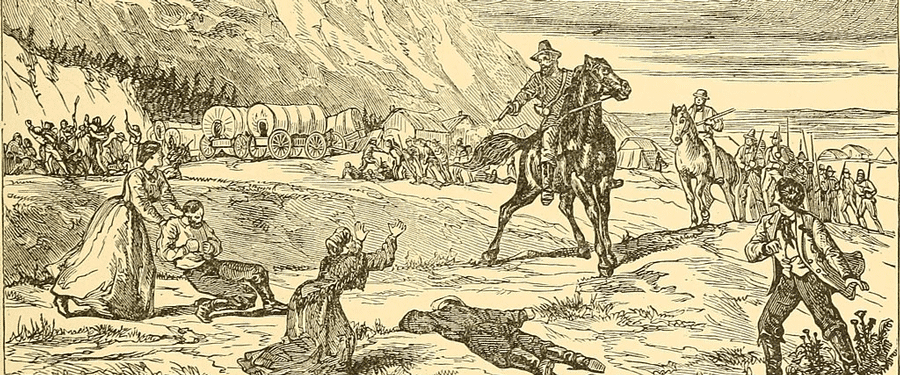
Investigations and Prosecutions for the Mountain Meadows Massacre
The first investigation into the Mountain Meadows Massacre was conducted by Brigham Young in 1857, shortly after the event. On September 29, 1857, Young interviewed John D. Lee, who provided a version of events blaming local Native Americans for the massacre. In 1858, Young sent a report to the Commissioner of Indian Affairs reiterating this narrative. However, meaningful federal investigation did not occur until 1859, when Jacob Forney and Major James Henry Carleton began their inquiries. Carleton’s report, based on his observations of the massacre site and interviews with local settlers and Paiute leaders, concluded that Mormons played a significant role in the killings.
Carleton described finding bones of women and children scattered across Mountain Meadows, with some children’s remains still appearing to be in their mothers’ arms. He buried the remains and erected a cairn and cross to mark the site. His report to Congress called the massacre a “heinous crime” and implicated both local Mormon leaders and senior church figures. Jacob Forney, who rescued surviving children from Mormon families, also concluded that the Paiutes could not have acted alone. Despite these findings, early attempts to secure indictments failed. In 1859, Judge John Cradlebaugh convened a grand jury in Provo, but it declined to issue charges.
Prosecutions resumed in 1871 after militia member Philip Klingensmith, who had left the LDS Church and moved to Nevada, provided an affidavit implicating key figures. By 1874, John D. Lee, William Dame, and several others were indicted. Lee was arrested, while other accused individuals fled or went into hiding. Brigham Young excommunicated Lee and Isaac Haight from the LDS Church in 1870, distancing the church from those directly involved in the massacre. Klingensmith agreed to testify in exchange for immunity, aiding the prosecution’s case.
John D. Lee stood trial in 1875, but the first jury failed to reach a verdict. A second trial in 1876, before an all-Mormon jury, resulted in Lee’s conviction. On March 23, 1877, Lee was executed by firing squad at Mountain Meadows. Before his death, Lee claimed he had been made a scapegoat to protect others involved in the massacre. Brigham Young stated that Lee’s execution was just, but added that it did not fully atone for the crime. The Mountain Meadows Massacre remains a subject of historical inquiry, symbolizing the tensions and tragedies of the American frontier.

The Legacy of the Mountain Meadows Massacre
The Mountain Meadows Massacre deeply shocked the American public when news of the event became widely known. Public sentiment toward the LDS Church grew increasingly hostile, with many blaming Mormon leaders for orchestrating the attack. The incident also heightened federal suspicion of Mormon settlements in Utah and intensified efforts to bring the territory under stricter U.S. control. Though legal consequences were limited, the massacre left a lasting stain on the history of westward expansion and relations between settlers and Native Americans.
In addition to legal repercussions, the massacre severely damaged the reputation of the Mormon community. Brigham Young and other leaders faced criticism for their alleged roles in inciting the violence, despite Young’s claims that he had sent a letter advising against harming the emigrants. Over the years, numerous memorials have been erected at the massacre site to honor the victims. The first memorial was built by Major Carleton’s troops in 1859, with subsequent monuments added over time. Today, the Mountain Meadows Massacre site is a National Historic Landmark, and annual commemorative events are held to remember those who lost their lives.
The Church of Jesus Christ of Latter-day Saints has taken steps to acknowledge the tragedy and distance itself from those directly involved. In 2002, the church published a comprehensive study titled Massacre at Mountain Meadows, which provided an in-depth examination of the event, acknowledging the role of local Mormon leaders while emphasizing the broader context of tension and conflict during that period. The publication marked a significant effort by the LDS Church to reconcile with the past and provide transparency about its historical involvement.
The Mountain Meadows Massacre remains a haunting chapter in American history, symbolizing the fragile nature of frontier life and the devastating consequences of fear, mistrust, and religious persecution. Though over a century and a half has passed, the massacre continues to evoke reflection and dialogue about accountability, forgiveness, and the complexities of westward expansion. Through ongoing memorials and historical research, efforts to honor the victims of the Mountain Meadows Massacre and understand the causes of this tragedy endure.
